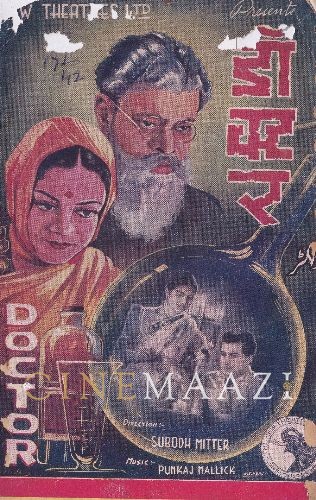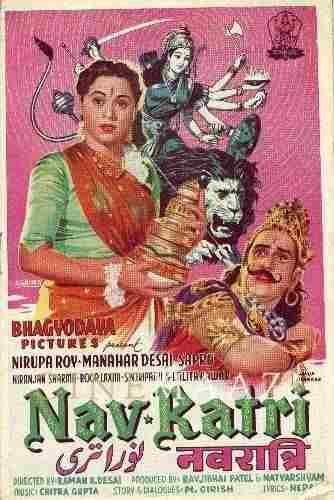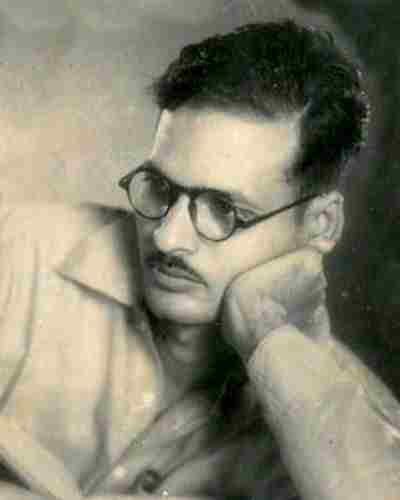Amar Mallick

Subscribe to read full article
This section is for paid subscribers only. Our subscription is only $37/- for one full year.
You get unlimited access to all paid section and features on the website with this subscription.
Not ready for a full subscription?
You can access this article for $2 , and have it saved to your account for one year.
- Born: May 1899 (Calcutta, British India)
- Died: August 1972 (Calcutta, India)
- Primary Cinema: Hindi
- Spouse: Bharati Devi
Actor and director Amar Mallick, active in both Bengali and Hindi cinema, is known for films such as Durgesh Nandini (1951), Haar Jeet (1940), Abhinetri (1940), and Swami Vivekananda (1955). Born in 1899 in Calcutta, he was a civil engineer by profession though films were his real passion. Joining the New Theatres group, he worked with Premankur Atorthy, featuring in one of the earliest sound films produced in India – Dena Paona (1931). He went on to act in several Bengali and Hindi films, usually playing side roles in more than 60 films. He would establish his own Amar Mallick Productions and become popular as a director with films like Badi Didi (1939), Biraj Bou (1946), Sati (1954) and Swami Vivekananda (1955) to his credit.
Among the early films he acted in are the Bengali film Dena Paona (1931) directed by Premankur Atorthy, in which he starred alongside Durgadas Bannerjee, Jahar Ganguly, Nibhanani Devi, and Bhanu Bandopadhyay. Based on a novel by Sarat Chandra Chattopadhyay and produced by New Theatres, the film is credited as the one of first Bengali talkies, and along with Alam Ara, was one of the first sound films produced in India. A social genre film, it explored the ills of the dowry system and touched on the problems of female oppression in 19th century Bengal.
Chirakumar Sabha (A Conference of Bachelors, 1932), a Bengali drama film directed by Atorthy, saw Mallick play a character called Professor Chandra Basu. One of the first of Rabindranath Tagore's works to be made into a film, the plot revolved around a group of hardened bachelors who meet on a regular basis, and eventually settle for marriage.
Chandidas (1932) featured him as Vijay Narayan in the Debaki Kumar Bose directorial about the legendary 15th century Bengali Vaishnavite poet, while Bose’s cult classic Meerabai (1933) saw him essay a character named Abhiram.
He went on to act in P C Barua’s all-time hit Devdas (1935) based on the Sharat Chandra Chattopadhyay eponymous novel about two lovers - Debdas and Parbati - who can never unite as mortals because of the class system in society. It starred Barua himself as Devdas and Jamuna Barua as Parvati (Paro) and Chandrabati Devi as Chandramukhi.
Other films Mallick acted in include Bidyapati (1937), Didi (1937), Mukti (1937), Jiban Maran (1938), Doctor (1940), Kashinath (1943), Chandrashekhar (1947), Chheley Kar (1954), Shap Mochan (1955), Andhare Alo (1957), Neelachaley Mahaprabhu (1957), Louhakapat (1958), Sonar Kathi (1958), Swarga Martya (1958), Chaowa-Pawa (1959), Shashi Babur Sansar (1959), Personal Assistant (1959), Pushpadhanu (1959), Kanchen Swarga (1962), Saat Pake Bandha (1964), Jiban Mrityu (1967), Baghini (1968), Manjari Opera (1970), Kuheli (1971) and Agni Sambhava (1982).
He made his debut as a director in 1939 with Badi Didi, written by Sarat Chandra Chattopadhyay and Kidar Nath Sharma. The plot revolved around Suren (Pahadi Sanyal), who, prevented by his family from pursuing a university career, leaves home and becomes a tutor to Pramila (Zainab). He falls in love with her widowed elder sister Madhavi (Molina Devi) who, although returning his love, has him sacked to save the situation. Years later, Suren becomes a big zamindar and, unknown to him, Madhavi is one of his tenants, suffering under the oppression of his staff. This provides ample opportunities for emotional drama about how traditional social conventions can lay waste to people's lives.
Haar Jeet, his directorial of 1940, was set in the early 20th century theatre industry of Calcutta. Kamala (Kanan Devi) is the star of the Ruby Theatre owned by her guardian Maheshbabu. Narendra (P Sanyal) is the equally popular star in the rival Bina Theatre, which he abandons to join the Ruby repertoire when he falls in love with Kamala. In a lyrical sequence in the countryside, they marry in a poor peasant setting. Narendra then forbids Kamala to continue her acting career. However, she returns to the stage while Narendra stays among the peasants. He later returns to the Bina Theatre, the success of which is intercut with the bankruptcy of Ruby Theatre.
Biraj Bou, his 1946 directorial, was written by Sarat Chandra Chattopadhyay, while Samapti (1949) starred Maya Bose, Bharati Devi, Hiralal, Bhupendra Kapoor, Talat Mahmood, and Sunder. Swamiji (1949) for which he directed a star cast comprising Manoranjan Bhattacharya and Ajit Prakash, was based on the life of Swami Vivekananda. Durgesh Nandini, his directorial of 1951, was based on the Bengali historical romance novel written by Bankim Chandra Chattopadhyay in 1865. The story was a love triangle between Jagat Singh, a Mughal general; Tilottama, the daughter of a Bengali feudal lord; and Ayesha, the daughter of a rebel Pathan leader against whom Jagat Singh was fighting.
Bhukler Sheshey, which he directed in 1952, starred Bharati Devi, Prabha Devi, and Kamal Mitra. It was followed by his directorial Sati (1954), and Swami Vivekananda (1955), a biopic on the spiritual leader starring Ajit Prakash, Bharati Devi and Anubha Gupta. The film depicted the eventful life of the renowned monk Swami Vivekananda, his teachings, thoughts, contribution towards society and his relation with his teacher Ramakrishna Paramahamsa. On its release, the film received mainly positive reviews from critics, deemed a “faithful and memorable documentation feature” on Swami Vivekananda. T M Ramachandran, in his book on 70 years of Indian cinema, wrote that the film “will ever remain enshrined in the memories of the viewers. The film brought to graphic view the exploits of this cyclonic sage of India.”
Mallick was married to Bharati Devi, an actress known for films such as The Hero (1966), Bandini (1963) and Oomar Qaid (1961), who had also worked in many of his films.
He passed away in August 1972 in Calcutta.
-
Filmography (7)
SortRole
-

Doctor 1941
-
Doctor 1940
-
Vidyapati 1937
-
Chorekanta 1931
-






.jpg)



